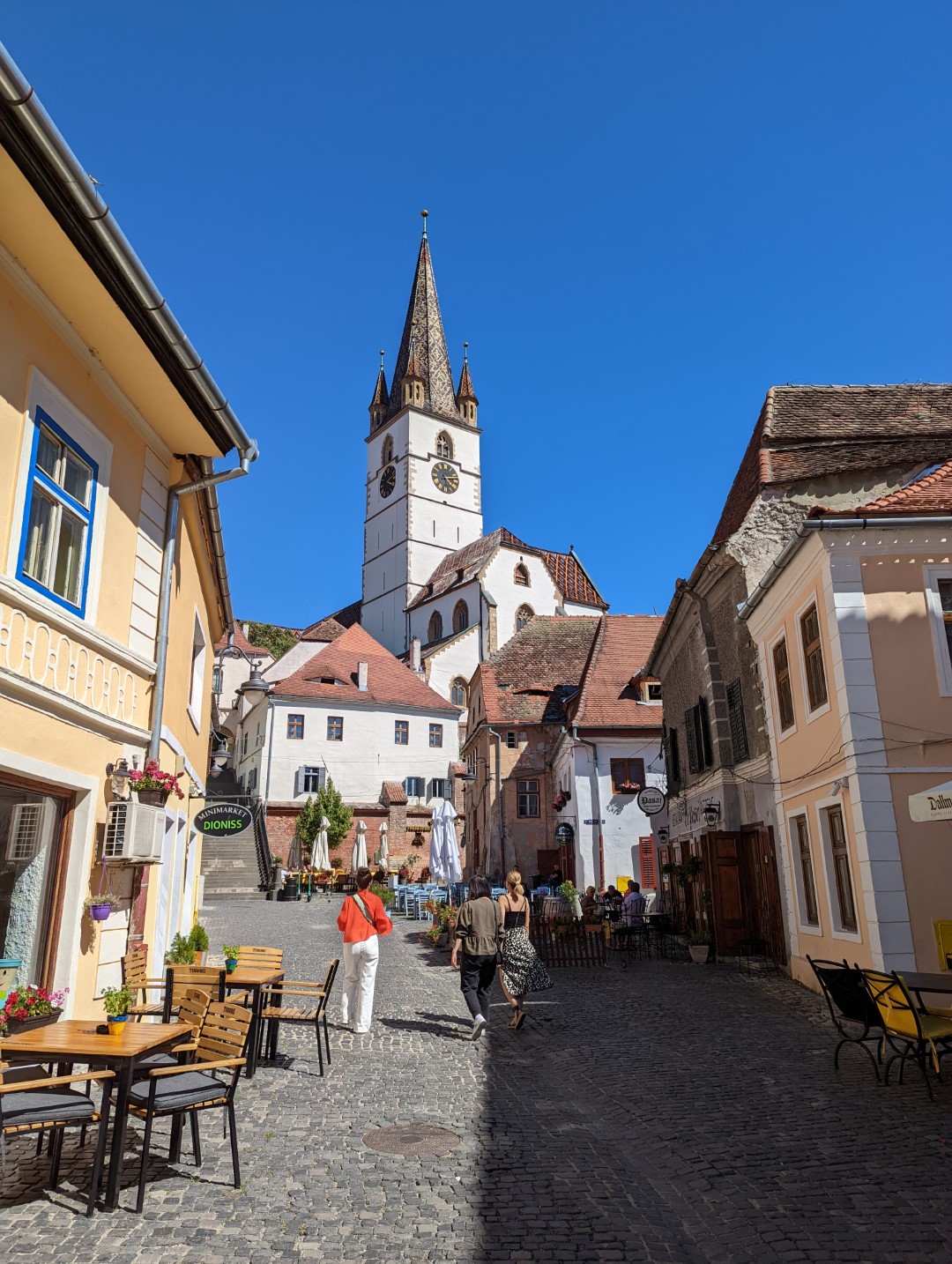Sibiu is another city in Romania built by Germans, similar to Brasov, and well worth the visit. Walking down the main pedestrian zone felt like walking through cities in Germany, but tailored for tourists, and a bit shabbier. Sibiu’s main plaza connects to a pedestrian-only street (Nicolae Baiescu) that is about half a mile long. Besides the many restaurants, there are 12 gelato shops, 4 soft serve ice cream shops and 7 bakeries. A Gelato minefield… just going for a walk there causes weight gain. We ate at the Cafe Wien (Vienna Cafe) and had some very good schnitzel.
In the center of the town is the Council Tower which was first erected in the 1300’s, with a major renovation in the 1600’s and a new top added in the 1800’s. The adjacent oxcart road from the lower to the upper town also dates from the 1300’s. So yes, this is an old town.
Finding Home
Even when we follow Google maps to the approximate location of our AirBnB, it is not always obvious where it is exactly. Street numbers are hit and miss. In this case it was behind this very old gate, through the courtyard and up some rickety worn wooden stairs. The apartment was very recently renovated and very nice, but it is often an adventure finding our home!
We attended a fund-raiser organ performance in the Lutheran Cathedral. They collected donations to pay for the large front pipes of a small organ. The pipes were stolen in 2018, just two years after the organ was renovated. The Cathedral was built in the 15th century, on the site of a 13th century church. The main organ in the Cathedral is the largest in Southeastern Europe.


Communist Era
During the communist era when everyone was enlisted to spy on everyone else, people used to talk about the eye-shaped dormers on the roofs being a place where people were watching from. They still look that way…

The Astra Museum
We visited another open air museum with buildings collected from around the country. The Astra Museum. There was a cultural fair going on at the same time so we ate some traditional foods and saw lots of traditional dancers and musicians. Traditional Romanian folk music involves flutes, drums, some clarinets and other woodwinds playing happy tunes at a frenetic speeds.
Traditional Clothing
The museum also had a collection of hand embroidered traditional blouses, each with a unique design representing different regions of the country. Susie was in textile heaven.
Next stop is Sighisoara, another very old fortified German city!





































Leave a Reply